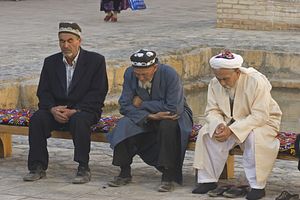The three men responsible for the Tuesday attack on Istanbul’s Ataturk International Airport–in which 43 were killed and more than 200 injured–have been identified by Turkish officials as citizens of Kyrgyzstan, Russia, and Uzbekistan.
The identification Thursday–sourced to Turkish officials and reported in numerous outlets–is only the slimmest piece of information about the attackers. No names have been released, although Turkish media is reporting that the men rented an apartment in Istanbul’s Fatih district for three months prior to the attack and that one of them left behind his passport. CNN cites a senior Turkish government source as saying that the authorities believe the men entered Turkey from Syria, coming from Raqqa–ISIS’ capital–and bringing with them the suicide vests and bombs, which they used in the attack.
In the coming weeks, as Turkish officials piece together the details of the attack, a hopefully clearer picture will emerge. Meanwhile, Western media unfamiliar with Central Asia will likely blunder its way through the 24/7 media cycle with scant details repeated ad nauseum alongside unsubstantiated stereotypes about Central Asia as a hotbed of jihad.
Case and point: although the text of this CNN story cites Turkish officials and abstains from leaps of imagination, the attached video clip does not. In the video clip, a senior CNN international correspondent, Clarissa Ward, echoed a previous guest:
…as you heard Michael say there, Central Asia, former countries, former Soviet Union satellite states, these are some of the most significant contributors to the jihad, and specifically to ISIS and are known, particularly the Chechens, as being some of the most brutal and battle-hardened fighters.
There are a number of problematic parts to that brief comment, most prominently the accusation that former Soviet states are “some of the most significant contributors to the jihad.”
There is considerable difficulty in determining precise numbers of foreign fighters who have flocked to Syria and Iraq, but using this December 2015 Soufan report we can at least get a gauge of some kind. (Read this for more on my own skepticism regarding foreign fighter estimates).
The report lists both official and unofficial numbers, depending on what was available. The highest numbers come from Middle Eastern and North African states, followed by Western Europe and then the Former Soviet Republics. But within the “former Soviet republics,” Russia accounts for half: 2400 out of 4700. Meaning the rest of the former Soviet states–14 independent countries–account together for the other half.
Kyrgyzstan, for which the Soufan report lists an unofficial number of 500 fighters in Iraq and Syria, has sent fewer fighters than countries such as France, Germany, and the United Kingdom.
Second, the statement that Central Asians have specifically joined ISIS, doesn’t reflect with what experts say on the matter. For example, Noah Tucker, a well-respected Central Asia expert, produced a report for USAID in May 2015 specifically analyzing Central Asian involvement in Iraq and Syria. On the subject of affiliation, Tucker had this to say:
In terms of specific affiliation, these fighters appear to be distributed into two broad affiliations, mirroring the larger fault lines of the Syrian conflict. The first, referred to elsewhere as the “Aleppo Uzbeks,” comprises several smaller brigades (and an independent VEO led by ethnic Uzbeks) allied with or part of Jabhat al Nusra and based around the opposition stronghold of Aleppo in Northern Syria. The second are those Central Asians fighting as part of ISIS, based in ar-Raqqa in Syria and in Mosul in Iraq.
Central Asians–like western Europeans–have been drawn to the fighting in Iraq and Syria for myriad reasons and fight on several sides.
Third, in doubling down on the stereotype of Central Asia as hotbed of radicalism–also done in a recent NBC article with regard to the events in Aktobe–the international media not only perpetuates a set of assumptions with loose tethers to reality, but also enables the authoritarian leaders of the region. Countries like Uzbekistan and Tajikistan have frequently used the pretense of fighting extremism to crack down on everyone from political dissidents to journalists and human rights activists.
International ignorance about Central Asia–not malicious, but rather the kind that comes with abject unfamiliarity–is both problematic and dangerous at times like this. Such assumptions are problematic from an analytical standpoint, distracting attention with an overemphasis on the who rather than on the how and why.
Moreover, analysts familiar with Central Asian foreign fighter patterns say that most who end up in Syria and Iraq are radicalized in Russia, where many Central Asians migrants work. Focusing on their citizenship is of limited use in the immediate sense. These assumptions are dangerous because they help reinforce stereotypes about not just the Central Asian region, but Central Asians abroad–furthering the marginalization and isolation that engenders communities which become susceptible to radicalization.
Suggested reading and listening:
- This series of reports by Noah Tucker on ISIS messaging and state response in the countries of Central Asia (Kazakhstan, Kyrgyzstan, Tajikistan, Turkmenistan and Uzbekistan)
- John Heathershaw and David W Montgomery’s 2014 report, “The Myth of Post-Soviet Muslim Radicalization in the Central Asian Republics”
- Podcast hosted by Nate Schenkkan, talking with Noah Tucker in March 2015 about ISIS and Central Asia
- A decade old but a good read still: Islam After Communism by Adeeb Khalid

































